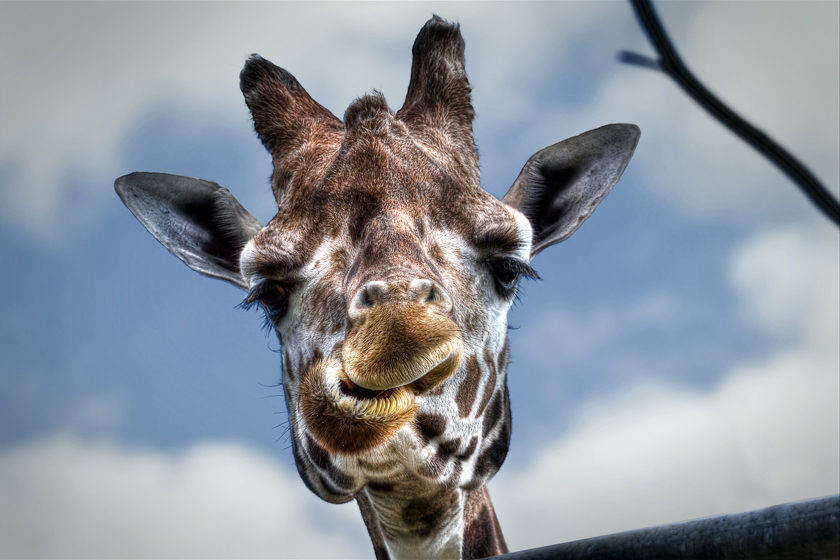After Dark, Giraffes Carry A Tune
New study from the University of Vienna reveals nighttime humming in the giraffe house.
By Vicki Croke

Photo: Magnetismus/Flickr.
Scientists have usually described giraffes as tall silent types. But a new study from the University of Vienna shows that that description was only half right. It turns out that under cover of darkness, zoo giraffes do something odd…they hum.
We’ve known that giraffes make some noise. Zoo keepers have always reported hearing the quiet, shy animals snorting or grunting on occasion during the day, but scientists reviewing nearly a thousand hours of audio material collected from three European zoos, from both day and night, discovered something significant—“harmonic, sustained and frequency-modulated ‘humming’ vocalizations during night recordings.”
Why do they do this?
Well, no one knows yet what these hums communicate—if anything (maybe these are just something like snores). But at least one possibility makes sense. These tall, visually-oriented animals can gather information about each other during the day just by looking around. But at night? Maybe humming helps them keep in touch.
According to the paper:
Anatomical investigations indicate that giraffes have excellent vision with potentially long-range visual acuity, which would provide a means of communication between widely separated conspecifics. Recent social behaviour research has shown that giraffes spend a significant portion of their vigilance towards social partners, suggesting that perception and utilization of visual communication cues are highly developed in the giraffe communication system. Giraffes might use vocalizations more often once vision is limited (e.g. at night time). Future studies should test in a well established experimental setting whether giraffes are more vocal when visual communication cues are absent.
This also makes sense in terms of how giraffe society is structured. Giraffes belong to what’s called a “fission-fusion” society. This is a social grouping in which the composition is in flux, and individuals or smaller groups can separate for a period of time and then come together. Elephants, chimps, and bottlenose dolphins are organized this way.

Photo: Rod Waddinton/Wikimedia Commons.
Many of the animals in this category have pretty sophisticated and sometimes long-distance ways of communicating with each other. In various species, the paper notes, this kind of vocalizing “can be used for transferring various information about, for example, individuality, age, gender, arousal, dominance hierarchies or reproductive states.”
Also on The Wild Life:
Giraffes Face Threat of ‘Silent Extinction’
So how about giraffes? It’s possible, but this new information is just the beginning of a line of inquiry. As the researchers make clear in their paper, titled “Nocturnal ‘humming’ vocalizations: adding a piece to the puzzle of giraffe vocal communication”:
The “hum” is a low-frequency vocalization with a rich harmonic structure and of varying duration. Since it was not possible to determine the calling individual, we are currently unable to prove that this sound is indeed used for communication or to give information about the behavioural context and prospective information content.
For years people have thought that giraffes might not be capable of vocalizing much because it would take tremendous airflow through those long necks. Some wondered if giraffes were producing infrasound—low-frequency sound below human hearing. Elephants use infrasound to communicate with one another, after all, even over long distances—and that was discovered from recording zoo elephants in the 1980s.
While this new audio monitoring seems to dispel the notion that giraffes use infrasound, the researchers are proving that along with watching giraffes, we need to listen.

One Response to “After Dark, Giraffes Carry A Tune”
Hm! :)
Comments are closed.